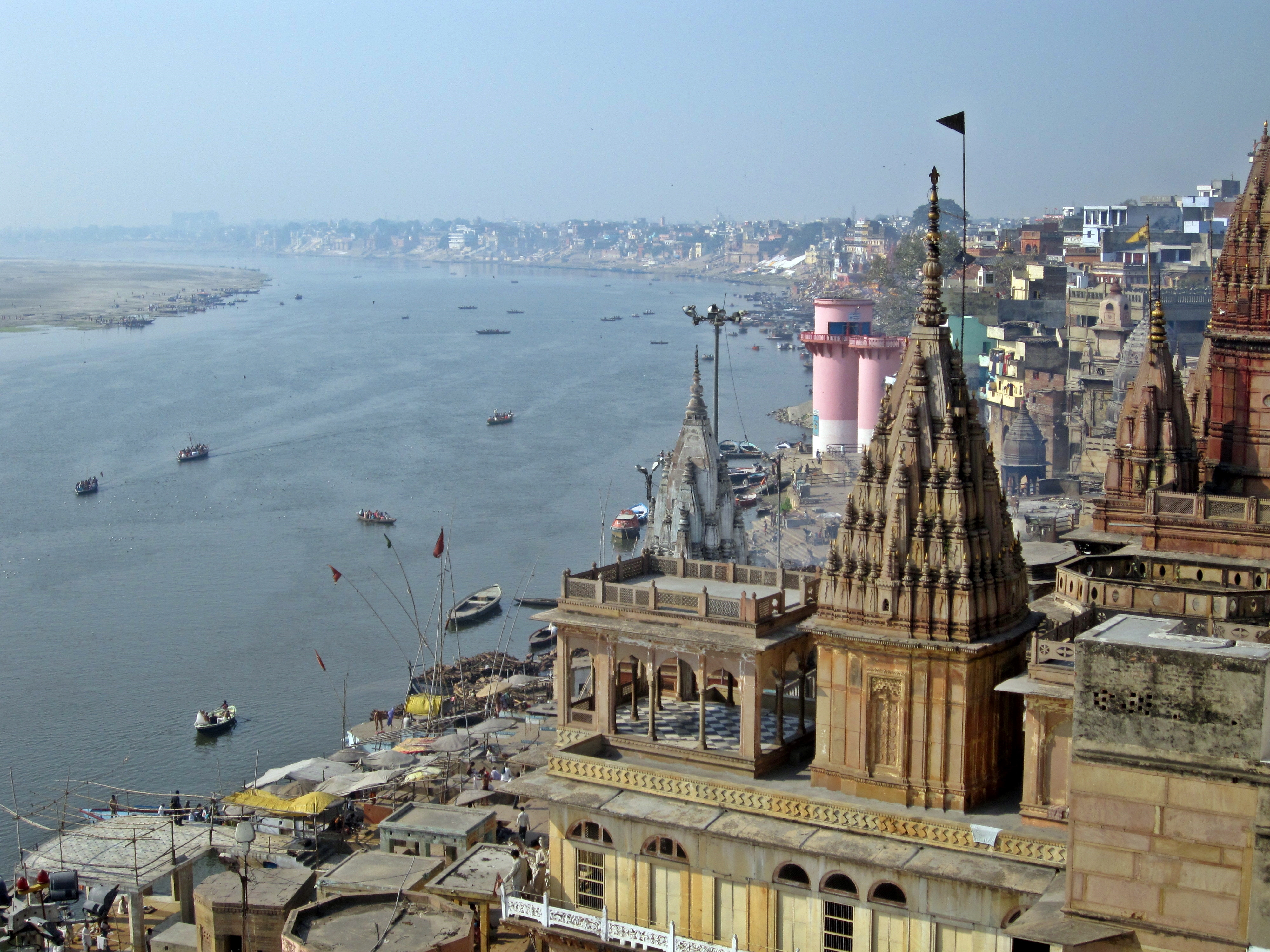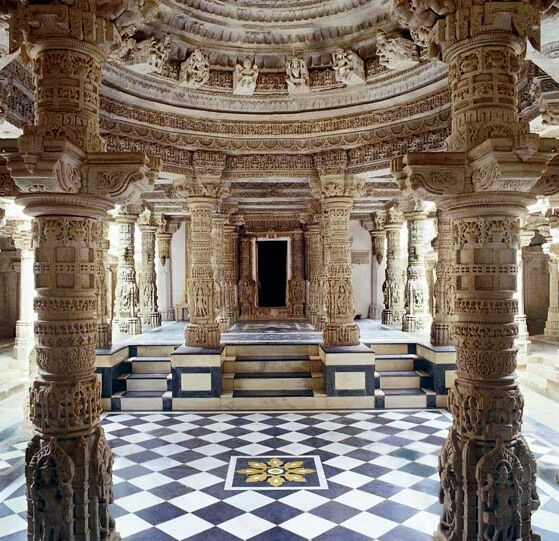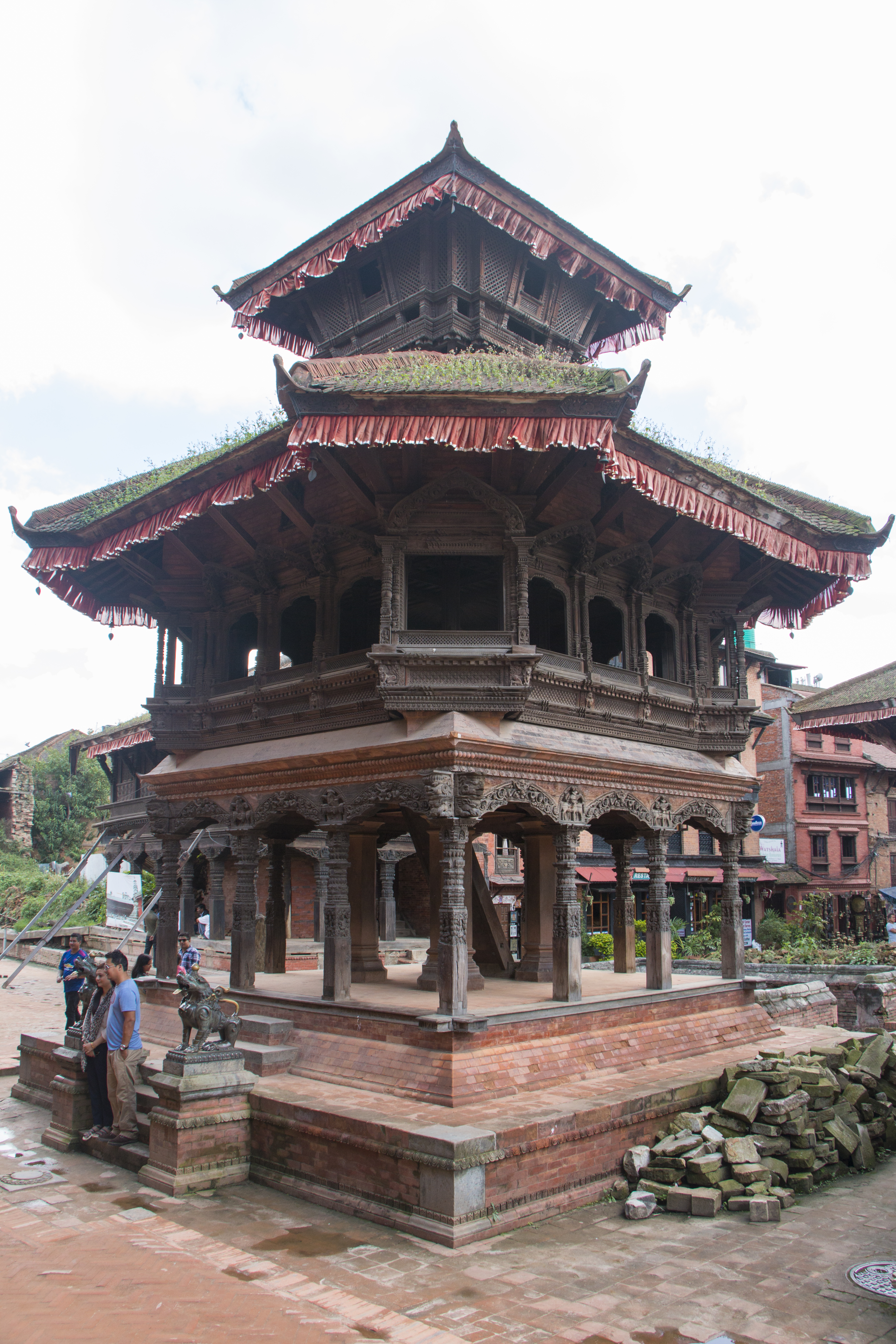|
Jirawala
Jirawala Tirth is a Jain temple in Jirawala village of Sirohi District in Rajasthan, India. It lies 58 km from Abu Road. The temple is considered an important Jain pilgrimage center. History According to Jain belief, the temple dates back to 2,800 years back. Jirawala has been an important Jain centre between 506 CE to 1324 CE and received patronage by multiple Jain acharyas. The iconic idol of Parshvanath, the principal deity of the temple, was found during an excavation. The cow belonging to Brahmin boy ''Kadwa'' used to pour out its milk every day near a cave in Jirawala. Upon hearing about this by Brahmin boy, Jain Seth Dhanna Shah dreamt of a Parshvanath idol where cow went to pour milk. After the search, the idol was found from the same spot and the idol was installed by Acharya Deva Gupta Suri in 894 CE. An idol of Neminatha was temporarily replaced as mulnayak of the temple. During 2001 Gujarat earthquake, the temple structure was damaged and was later resto ... [...More Info...] [...Related Items...] OR: [Wikipedia] [Google] [Baidu] |
Jirawala Parshwanath (cropped)
Jirawala Tirth is a Jain temple in Jirawala village of Sirohi District in Rajasthan, India. It lies 58 km from Abu Road. The temple is considered an important Jain pilgrimage center. History According to Jain belief, the temple dates back to 2,800 years back. Jirawala has been an important Jain centre between 506 CE to 1324 CE and received patronage by multiple Jain acharyas. The iconic idol of Parshvanath, the principal deity of the temple, was found during an excavation. The cow belonging to Brahmin boy ''Kadwa'' used to pour out its milk every day near a cave in Jirawala. Upon hearing about this by Brahmin boy, Jain Seth Dhanna Shah dreamt of a Parshvanath idol where cow went to pour milk. After the search, the idol was found from the same spot and the idol was installed by Acharya Deva Gupta Suri in 894 CE. An idol of Neminatha was temporarily replaced as mulnayak of the temple. During 2001 Gujarat earthquake, the temple structure was damaged and was later restored ... [...More Info...] [...Related Items...] OR: [Wikipedia] [Google] [Baidu] |
Parshva
''Parshvanatha'' (), also known as ''Parshva'' () and ''Parasnath'', was the 23rd of 24 ''Tirthankaras'' (supreme preacher of dharma) of Jainism. He is the only Tirthankara who gained the title of ''Kalīkālkalpataru (Kalpavriksha in this "Kali Yuga").'' Parshvanatha is one of the earliest ''Tirthankaras'' who are acknowledged as historical figures. He was the earliest exponent of Karma philosophy in recorded history. The Jain sources place him between the 9th and 8th centuries BCE whereas historians consider that he lived in the 8th or 7th century BCE. Parshvanatha was born 273 years before Mahavira. He was the spiritual successor of 22nd tirthankara Neminatha. He is popularly seen as a propagator and reviver of Jainism. Parshvanatha attained moksha on Mount Sammeda ( Madhuban, Jharkhand) popular as Parasnath hill in the Ganges basin, an important Jain pilgrimage site. His iconography is notable for the serpent hood over his head, and his worship often includes Dharanendra ... [...More Info...] [...Related Items...] OR: [Wikipedia] [Google] [Baidu] |
Sirohi District
Sirohi District is a district of Rajasthan state in western India. The city of Sirohi is the district headquarters. As of 2011 it is the third least populous district of Rajasthan (out of 33), after Jaisalmer and Pratapgarh. History In 1948, Sirohi was taken over by Bombay State from 5 January 1949 to 25 January 1950. Shortly thereafter, on 25 January 1950, the former state was partitioned with Abu Road tehsil and part of Delwara tehsil being joined to Bombay and the remaining portion merging with Rajasthan. At that time an area of 787 km2 consisting of Abu Road tehsil and a part of Delwara tehsil was merged with then Bombay state, but it was returned to Sirohi district of Rajasthan State on 1 November 1956. Sirohi is also called as "Dev Nagari" since ancient times because of many temples and shrines in the district. Sirohi is also famous for manufacturing of double edged swords, from the time of the Chauhan Deora rulers (15th century AD) until 1947. Geography The dist ... [...More Info...] [...Related Items...] OR: [Wikipedia] [Google] [Baidu] |
Abu Road
Abu Road is a city and sub-district in Sirohi district of Rajasthan state in western India, lies on the bank of West Banas River. It is the tehsil and sub-district headquarters. Its railway station is an important stop on the main Indian Railways line between New Delhi and Ahmedabad and registers an impressive growth in passenger traffic and revenue generation for North Western Railway zone. The popular hill station, Mount Abu is 27 km up the hill from Abu Road. The Industrial city is located in the southernmost part of Rajasthan, near the Gujarat border. It is surrounded by the Aravalli Range, which separates it from the Thar Desert. It is around 482 km from Jaipur, approximately 151 km from Udaipur and 197 km from Ahmedabad. Placed almost in the middle of major Indian metro cities. Besides, connectivity with Gujarat ports and cities, it has a strategic geographical advantage. The main industries are marble & granite, miniature cement plants, HDPE bags, synt ... [...More Info...] [...Related Items...] OR: [Wikipedia] [Google] [Baidu] |
Sirohi District
Sirohi District is a district of Rajasthan state in western India. The city of Sirohi is the district headquarters. As of 2011 it is the third least populous district of Rajasthan (out of 33), after Jaisalmer and Pratapgarh. History In 1948, Sirohi was taken over by Bombay State from 5 January 1949 to 25 January 1950. Shortly thereafter, on 25 January 1950, the former state was partitioned with Abu Road tehsil and part of Delwara tehsil being joined to Bombay and the remaining portion merging with Rajasthan. At that time an area of 787 km2 consisting of Abu Road tehsil and a part of Delwara tehsil was merged with then Bombay state, but it was returned to Sirohi district of Rajasthan State on 1 November 1956. Sirohi is also called as "Dev Nagari" since ancient times because of many temples and shrines in the district. Sirohi is also famous for manufacturing of double edged swords, from the time of the Chauhan Deora rulers (15th century AD) until 1947. Geography The dist ... [...More Info...] [...Related Items...] OR: [Wikipedia] [Google] [Baidu] |
Jainism
Jainism ( ), also known as Jain Dharma, is an Indian religions, Indian religion. Jainism traces its spiritual ideas and history through the succession of twenty-four tirthankaras (supreme preachers of ''Dharma''), with the first in the current time cycle being Rishabhadeva, whom the tradition holds to have lived millions of years ago, the twenty-third ''tirthankara'' Parshvanatha, whom historians date to the 9th century BCE, and the twenty-fourth ''tirthankara'' Mahāvīra, Mahavira, around 600 BCE. Jainism is considered to be an eternal ''dharma'' with the ''tirthankaras'' guiding every time cycle of the Jain cosmology, cosmology. The three main pillars of Jainism are ''Ahimsa in Jainism, ahiṃsā'' (non-violence), ''anekāntavāda'' (non-absolutism), and ''aparigraha'' (asceticism). Jain monks, after positioning themselves in the sublime state of soul consciousness, take five main vows: ''ahiṃsā'' (non-violence), ''satya'' (truth), ''Achourya, asteya'' (not stealing), ''b ... [...More Info...] [...Related Items...] OR: [Wikipedia] [Google] [Baidu] |
Dharamshala (type Of Building)
A dharamshala, also written as dharmashala is a public resthouse or shelter in the Indian subcontinent. Just as sarai are for travellers and caravans, dharamshalas are built for religious travellers at pilgrimage sites. In Nepal there are dharamshalas especially built for pilgrims as well as dharamshalas for locals. Etymology ''Dharamshala'' (Devanagari: धर्मशाला; ITRANS: Dharmashaalaa; IAST: Dharmaśālā) is a word (derived from Sanskrit) that is a compound of ''dharma'' (धर्म) and ''shālā'' (शाला). A loose translation into English would be 'spiritual dwelling' or, more loosely, 'sanctuary'. Rendering a precise literal translation into English is problematic due to the vast and conceptually rich semantic field of the word ''dharma'', and the cultural aspect of India. In common Hindu usage, the word ''dharamshala'' refers to a shelter or rest house for spiritual pilgrims. Traditionally, such ''dharamshalas'' (pilgrims' rest houses) were common ... [...More Info...] [...Related Items...] OR: [Wikipedia] [Google] [Baidu] |
Jain Temples In Rajasthan
The architecture of the Indian state of Rajasthan has usually been a regional variant of the style of Indian architecture prevailing in north India at the time. Rajasthan is especially notable for the forts and palaces of the many Rajput rulers, which are popular tourist attractions. Most of the population of Rajasthan is Hindu, and there has historically been a considerable Jain minority; this mixture is reflected in the many temples of the region. Māru-Gurjara architecture, or "Solaṅkī style" is a distinctive style that began in Rajasthan and neighbouring Gujarat around the 11th century, and has been revived and taken to other parts of India and the world by both Hindus and Jains. This represents the main contribution of the region to Hindu temple architecture. The Dilwara Jain Temples of Mount Abu built between the 11th and 13th centuries CE are the best-known examples of this style. The Adhai Din Ka Jhonpra mosque in Ajmer (no longer in religious use) is an impo ... [...More Info...] [...Related Items...] OR: [Wikipedia] [Google] [Baidu] |
The Hindu
''The Hindu'' is an Indian English-language daily newspaper owned by The Hindu Group, headquartered in Chennai, Tamil Nadu. It began as a weekly in 1878 and became a daily in 1889. It is one of the Indian newspapers of record and the second most circulated English-language newspaper in India, after '' The Times of India''. , ''The Hindu'' is published from 21 locations across 11 states of India. ''The Hindu'' has been a family-owned newspaper since 1905, when it was purchased by S. Kasturi Ranga Iyengar from the original founders. It is now jointly owned by Iyengar's descendants, referred to as the "Kasturi family", who serve as the directors of the holding company. The current chairperson of the group is Malini Parthasarathy, a great-granddaughter of Iyengar. Except for a period of about two years, when S. Varadarajan held the editorship of the newspaper, the editorial positions of the paper were always held by members of the family or held under their direction. Histo ... [...More Info...] [...Related Items...] OR: [Wikipedia] [Google] [Baidu] |
The Times Of India
''The Times of India'', also known by its abbreviation ''TOI'', is an Indian English-language daily newspaper and digital news media owned and managed by The Times Group. It is the third-largest newspaper in India by circulation and largest selling English-language daily in the world. It is the oldest English-language newspaper in India, and the second-oldest Indian newspaper still in circulation, with its first edition published in 1838. It is nicknamed as "The Old Lady of Bori Bunder", and is an Indian " newspaper of record". Near the beginning of the 20th century, Lord Curzon, the Viceroy of India, called ''TOI'' "the leading paper in Asia". In 1991, the BBC ranked ''TOI'' among the world's six best newspapers. It is owned and published by Bennett, Coleman & Co. Ltd. (B.C.C.L.), which is owned by the Sahu Jain family. In the Brand Trust Report India study 2019, ''TOI'' was rated as the most trusted English newspaper in India. Reuters rated ''TOI'' as India's most trus ... [...More Info...] [...Related Items...] OR: [Wikipedia] [Google] [Baidu] |
Indian History Congress
Indian History Congress is the largest professional and academic body of Indian historians with over 35,000 members. It was established in 1935. The name of any new applicant for membership needs to be proposed and seconded by existing Ordinary or Life Members. History The lead to establish an all-India national congress of historians was taken by Poona historians during the period of British colonial rule. The first session took place in Bharat Itihas Sanshodhak Mandal, Poona, in 1935. Historians such as Datto Vaman Potdar, Surendra Nath Sen (who later became the first director of National Archives of India), and Sir Shafaat Ahmad Khan attended the first session. Historians Mohammad Habib and Susobhan Sarkar and later Nurul Hasan, Ram Sharan Sharma, Radha Krishna Chaudhary, Satish Chandra, Bipan Chandra, Romila Thapar, Irfan Habib, Athar Ali, Barun De, Iqtidar Alam Khan, B. N. Mukherjee, K. N. Panikkar, Brajadulal Chattopadhayay, Dwijendra Narayan Jha, Sumit Sarkar, Sabyasachi ... [...More Info...] [...Related Items...] OR: [Wikipedia] [Google] [Baidu] |
Motilal Banarsidass
Motilal Banarsidass Publishing House (MLBD) is an Indian academic publishing house, founded in Delhi, India in 1903. It publishes and distributes serials, monographs, and scholarly publications on Asian religions, Buddhology, Indology, Eastern philosophy, history, culture, arts, architecture, archaeology, language, literature, linguistics, musicology, mysticism, yoga, tantra, occult, medicine, astronomy, and astrology. Amongst its publications are the 100 volumes of the Mahapuranas; the 50 volumes of the ''Sacred Books of the East'', edited by Max Müller; ''Bibliotheca Buddhica'' (30 volumes in 32 pts); Ramcharitmanas with Hindi and English translations; the Manusmriti in 10 volumes and the Sanskrit lexicon; and the 7 volumes of ''Encyclopedia of Indian Philosophies''. It also brings out books based on research and study conducted at organizations such as the Indian Council of Historical Research (ICHR), Indira Gandhi National Centre for the Arts (IGNCA), and Indian Coun ... [...More Info...] [...Related Items...] OR: [Wikipedia] [Google] [Baidu] |







